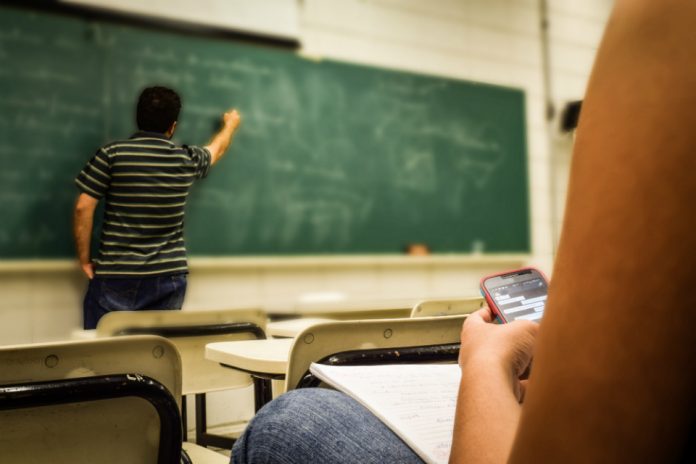Coronavirus (COVID-19) infection rates among students and staff in schools were linked to those found in the wider community at the peak of the second wave, one of the largest studies in schools has found.
The Schools Infection Survey (SIS) – a partnership between Public Health England (PHE), the Office for National Statistics and the London School of Hygiene & Tropical Medicine (LSHTM) – tested nearly 10,000 students and staff across England in November.
Testing occurred at schools, and was not determined by participants having any symptoms.
The study found 1.24% of pupils (95% confidence interval: 0.96% to 1.58%) and 1.29% of staff (95% confidence interval: 0.96% to 1.68%) tested positive for current infection overall.
The percentage of staff testing positive for current infection was higher in secondary schools (1.47%: 95% confidence interval: 1.08% to 1.97%) than in primary schools (0.75%: 95% confidence interval: 0.32% to 1.47%).
For pupils, the percentage testing positive for current infection was also higher in secondary schools (1.48%: 95% confidence interval: 1.10% to 1.98%) than in primary schools (0.89%: 95% confidence interval: 0.54% to 1.39%).
However, the 95% confidence intervals indicate that these differences between pupils and staff and primary and secondary schools are not statistically significant.
According to the separate COVID-19 Infection Survey (CIS), 1.2% of the general population (95% credible interval 1.15% to 1.29%) had the coronavirus during the week 8 to 14 November.
Dr Shamez Ladhani, a consultant at PHE and the study’s chief investigator, said:
While there is still more research to be done, these results appear to show that the rate of infection among students and staff attending school closely mirrors what’s happening outside the school gates. That’s why we all need to take responsibility for driving infections down if we want to keep schools open and safe for our children.
We are immensely grateful to the staff and pupils who have volunteered to participate in this study. They have given us the clearest picture to date of the landscape of infection in educational settings.
Students and staff are being tested for both the presence of the virus and antibodies, which indicate past infection, throughout the school year. This is to detect new cases, monitor COVID-19 related absences from school, and assess the effectiveness of measures put in place to control the virus.
Professor James Hargreaves, co-chief investigator of the study from LSHTM, said:
The more information we can collect about infection rates within schools, the better understanding we have of their role in transmission within the wider community and how to minimise SARS-CoV2 transmission.
These findings show that, in November, a significant number of students and staff who were attending school had coronavirus infection. With this crucial collaboration between the scientists, school staff and pupils, and their parents, we hope to answer questions to ensure children’s education can continue in the safest way possible.
Background information
A direct comparison between the CIS and the unweighted Schools Survey is complex. The CIS data includes information from randomly selected members of the population and who may or may not be exhibiting symptoms. There is a presumption those individuals who are selected for the SIS will not be showing symptoms, as they would then not be attending school.
The SIS design (which is concentrated in areas of England where COVID-19 infection was highest at the start of the academic year) meaning the data presented are not intended to be generalisable to England as a whole.
About 17,000 pupils and staff are currently enrolled in the study from more than 130 schools across England. In the first round, 9662 students and staff were tested across 105 schools (63 secondary; 42 primary) between 3 and 19 November.
The London School of Hygiene & Tropical Medicine (LSHTM) is a world-leading centre for research, postgraduate studies and continuing education in public and global health. LSHTM has a strong international presence with over 3,000 staff and 4,000 students working in the UK and countries around the world, and an annual research income of £180 million.
LSHTM is one of the highest-rated research institutions in the UK, is partnered with 2 MRC University Units in The Gambia and Uganda, and was named University of the Year in the Times Higher Education Awards 2016. Our mission is to improve health and health equity in the UK and worldwide; working in partnership to achieve excellence in public and global health research, education and translation of knowledge into policy and practice.







